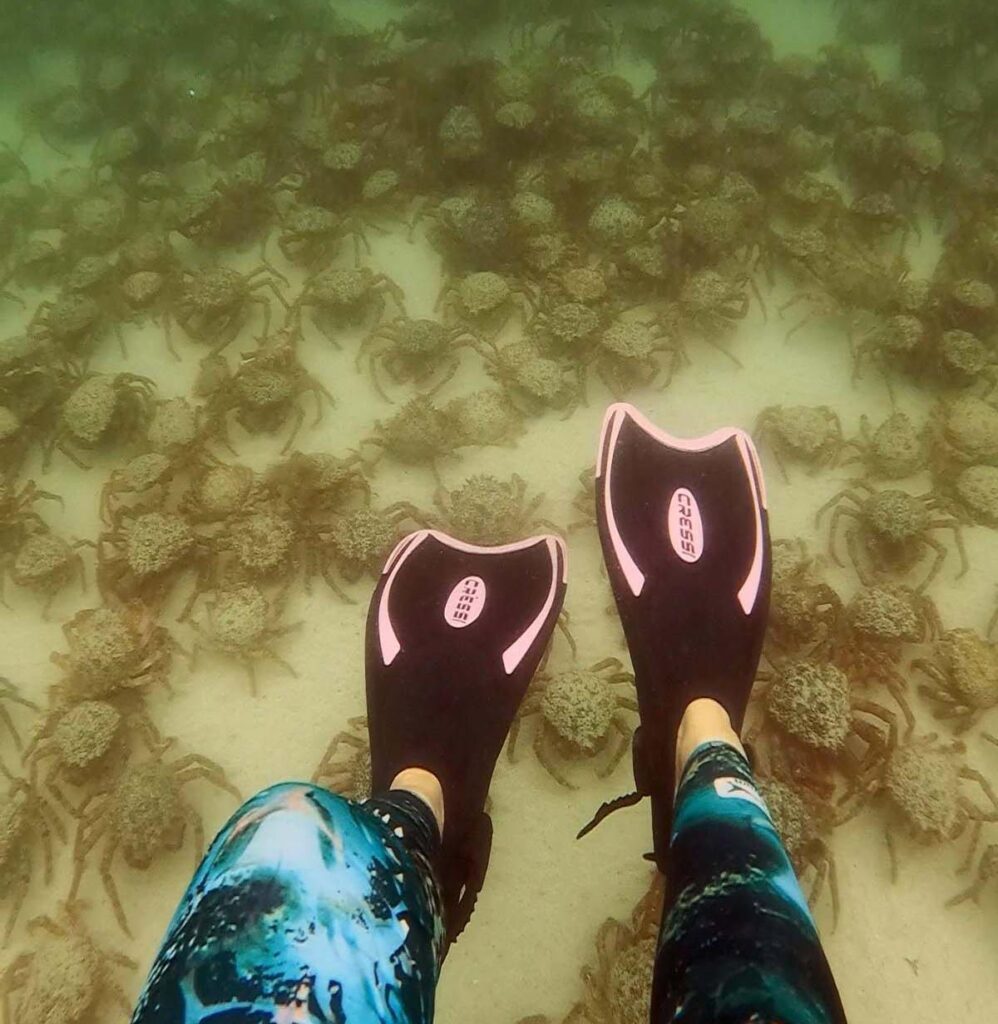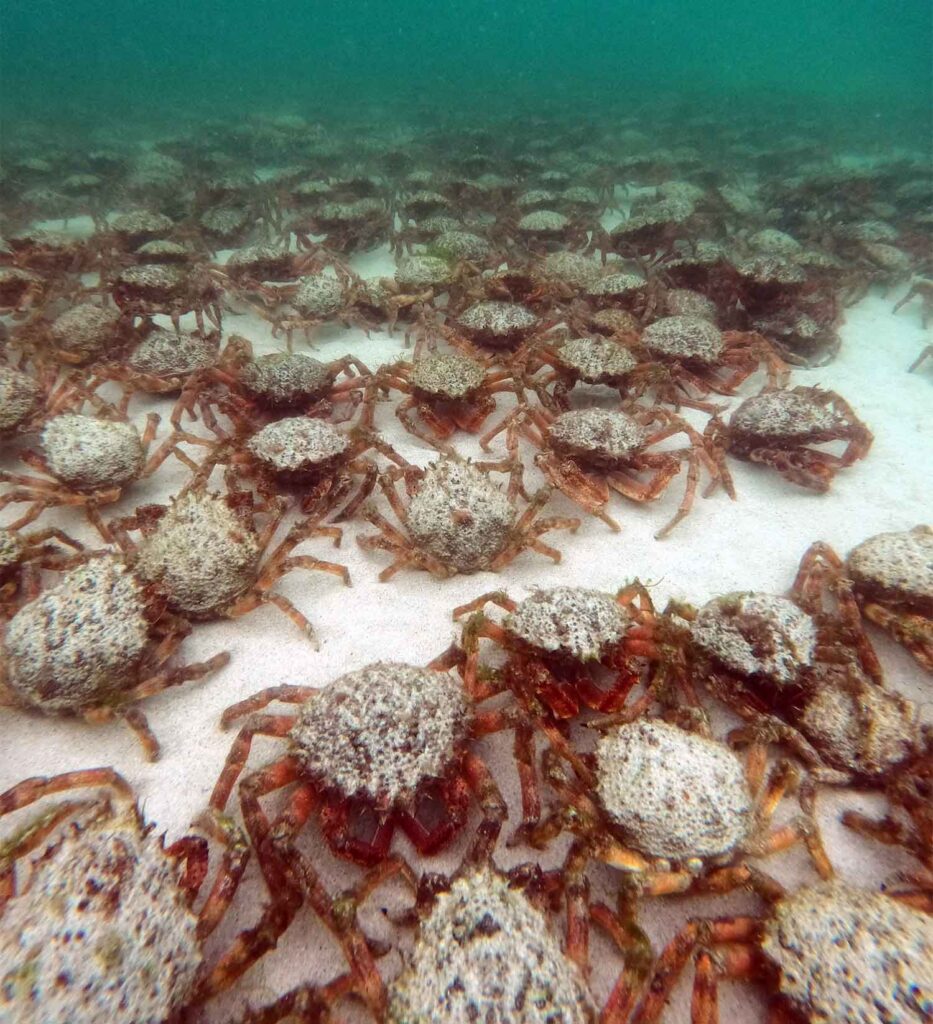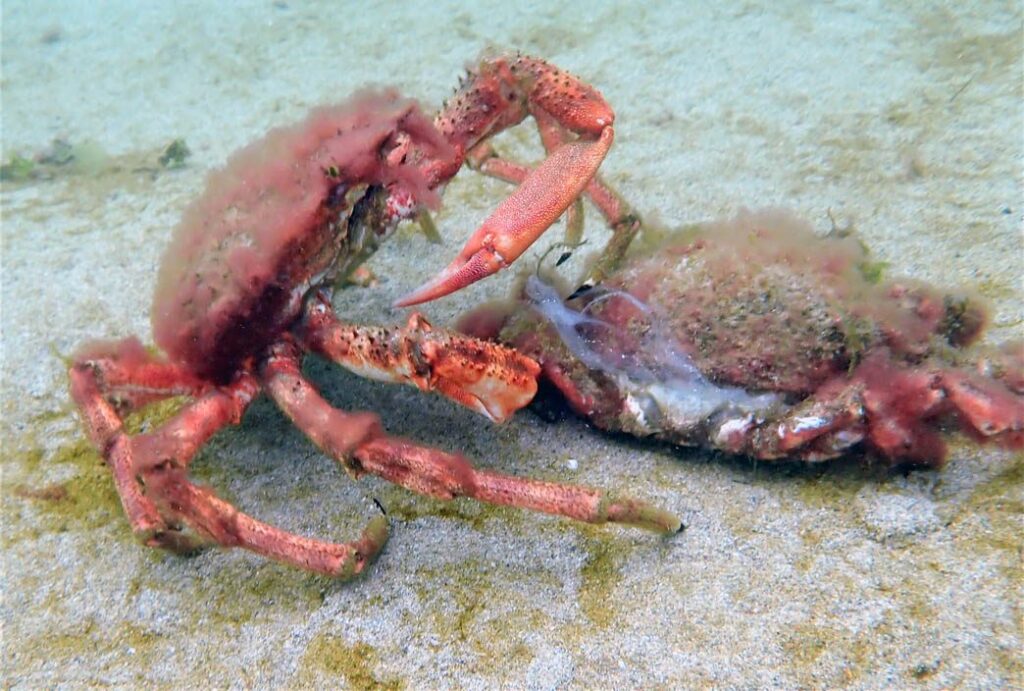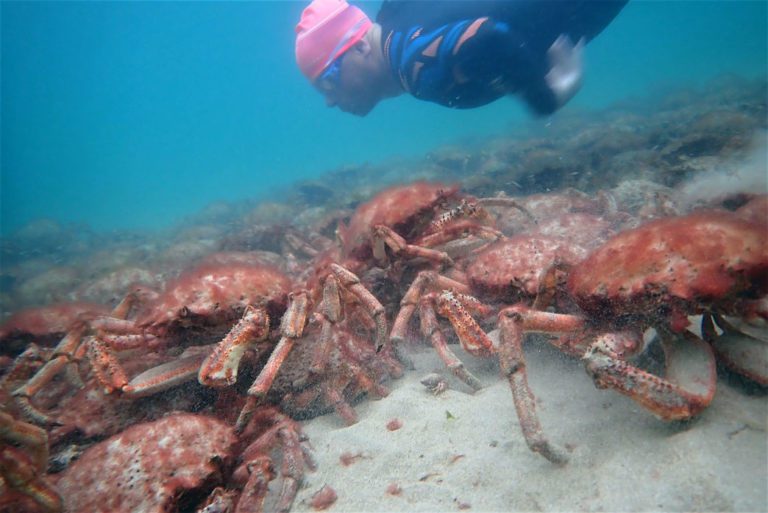Once again Cornish seas are in the news, as thousands of male spiny spider crabs gathered at Falmouth in what Cornwall Wildlife Trust (CWT) described as a “spectacular natural phenomenon”.
Although the mass aggregation happens annually, usually between late summer and early autumn, this year’s event was reckoned to be on a particularly large scale. It was filmed at low tide in knee-deep water by CWT marine conservation officer Matt Slater, a few metres out from a popular beach, and also by trust volunteer and snorkelling instructor Katie Maggs.

The crabs close ranks to protect themselves from predators as they crack open their exoskeletons to grow a new outer shell. Individually they are at their most vulnerable to predators during this moulting process.
“I have seen spider crabs on every dive and snorkel I have done for the past four years, but I have never seen a group as large as this!” said Slater. “Looking down at the mass of crabs scuttling on the seabed was a truly incredible experience.

“Our seas are full of surprises – most locals would have no idea that one of the world’s great wildlife aggregations is occurring not too far from where they sleep. It goes to show how important our Cornish seas are, and why we all need to look after them better.”

Spiny spider crabs (Maja brachydactyla) are common along the south and west coasts of England and Wales, but populations appear to have thrived in Cornwall in recent years as a direct result of warming seas caused by climate change. They can span 20cm, feed primarily on seaweed, mussels and starfish and their oval shells are often covered in algae.
“We hope this mass sighting is a sign that spider crab populations are healthy,” said Slater. “We would love to know if there are more aggregations like this forming around the coast, or if this is a one-off.” Any such sightings can be reported via the trust’s ORKS ((Online Recording Kernow & Scilly) app or online.
Also on Divernet: Diver’s Rainbow Nudi A First For UK, Seagrass Lifts ‘Blue Carbon’ Hopes In Cornwall, Octopuses Are Booming In Cornwall, Freak Event: Snorkeller Plays Down Shark Bite


I saw a massive pile of spider crabs in 5 metres of water when on a training dive with my son near Solva, West Wales, 20 years ago. The sea temperature (measured by our dive computers) hasn’t risen since then so the large inshore spider crab gatherings don’t seem to be due to climate change.